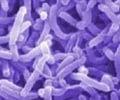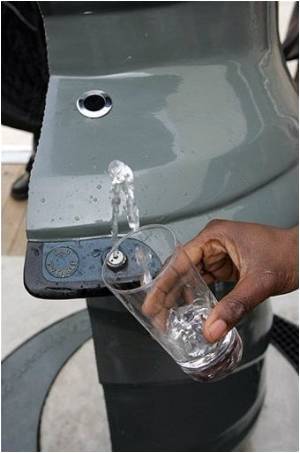Simple water test can now prevent crippling bone diseases of underdeveloped and developing countries
Highlights
- A simple color changing test have been devised to detect the harmful fluoride levels in drinking water
- Increased levels of fluoride are known to cause skeletal fluorosis and Crippling deformities of spine and joints by weakening the bones
- When water passes over certain minerals, it can dissolve fluoride, which results in elevated levels of fluoride in drinking water sources in parts of East Africa, India, China and North America.
TOP INSIGHT
This method of water testing is similar to that of litmus paper, simple color change can provide the information regarding the increased levels of fluoride in the water.
Various water sources could be the reason behind the increased fluoride levels in drinking water
When water passes over certain minerals, it can dissolve fluoride, which results in elevated levels of fluoride in drinking water sources in parts of East Africa, India, China and North America.
Levels of fluoride in drinking water are routinely monitored and controlled at treatment works in developed countries. However, in areas of the world where there is no piped water system or treatment works, people rely on drawing untreated water from wells, which can often be contaminated with higher than recommended levels of fluoride.
The amounts of fluoride in the groundwater can vary due to weather events, with levels fluctuating hugely when there is a lot of rain.
Whilst the test is the proof of concept stage, the team aims to develop it into a disposable test strip that is low cost and easy to use by anyone.
"Most water quality monitoring systems need a lab and power supply and a trained operator to work them. What we've developed is a molecule that simply changes color in a few minutes which can tell you whether the level of fluoride is too high”.
"This technology is in the very early stages, but we'd like to develop this technology into test strips, similar to litmus paper, that allow people without any scientific training to perform a test that is low cost, rapid and robust”
"We anticipate that in the future it could make a real difference to people's lives."
Co-investigator Dr Jannis Wenk, of the Department of Chemical Engineering and Water Innovation and Research Centre (WIRC) at Bath said: "I am very enthusiastic about the newly developed indicator molecules and am convinced that they can be incorporated into an easy to use technology that is able to provide instant information on the safety of drinking water with regards to fluoride."
The Bath researchers are partnering with the Nasio Trust, a charity that works to protect and support vulnerable children in East Africa, to develop their system for ease of use in the field.
Director of the Nasio Trust, Nancy Hunt, said: "For decades, people living in Oldonyosambu area of Arusha Tanzania East Africa, have been drinking water with naturally occurring levels of fluoride that can reach over sixty times the US recommended level.
"This has had a severe impact on the lives of people in this poor community, causing crippling skeletal fluorosis, chronic pain and poor cognitive development in children.
"Working in partnership with the University of Bath, this new technology will provide the Nasio Trust with a simple, affordable method to test fluoride levels which will enable us to identify, remove or reduce the cause of the fluoride problem and provide safe drinking water to further improve the quality of life and long-term health outcomes for the community of Oldonyosambu."
The team is now looking for additional partners to take the technology forward and help develop the test. They are also working towards adopting the technology to other types of notorious water contaminants of global concern, including mercury, lead, and cadmium.
Reference
- Azulene–boronate esters: colorimetric indicators for fluoride in drinking water
- (http://pubs.rsc.org/en/Content/ArticleLanding/2017/CC/C7CC07416F#!divAbstract)
Source-Eurekalert
 MEDINDIA
MEDINDIA





 Email
Email










